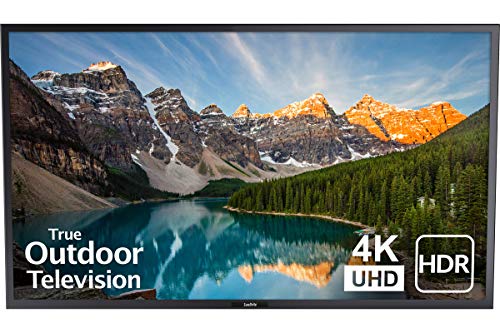Can You Leave A TV In A Hot, Cold, Or Humid Garage?
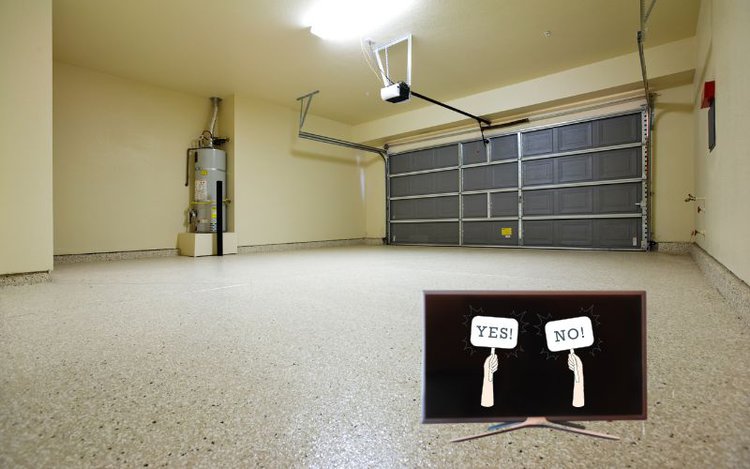
What To Know
- TVs should not be left in hot, cold, or humid garages due to the potential for damage from thermal cycling, condensation, and other environmental stresses
- Heat can interfere with a TV’s cooling mechanisms and damage internal components, while cold can lead to condensation and thawing issues
- To mitigate risks, using protective covers or installing insulation and climate control in the garage to create a more stable environment.
This guide provides essential insights on how to maintain your television’s longevity in hot, cold, or humid garages.
Discover the best practices for protecting your screen from the elements. Ready to safeguard your technology? Let’s delve into the details.
Quick Navigation
Can You Leave a TV in a Hot, Cold, or Humid Garage?
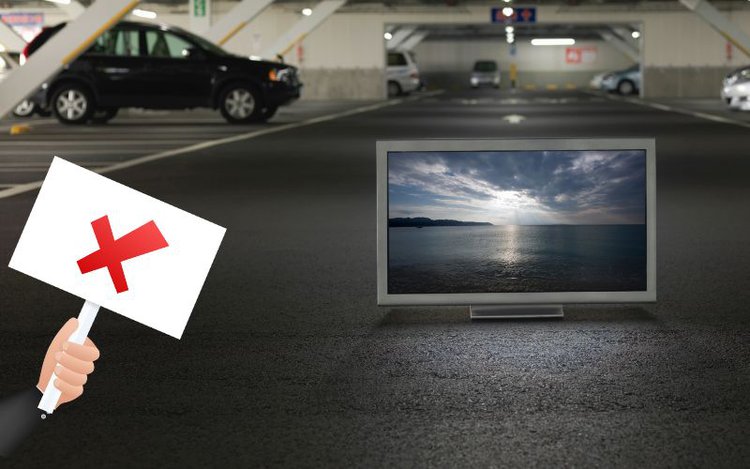
No, do not leave your TV in a hot, cold, or humid garage or any other place with abnormal or vacillating ambient temperature or atmospheric conditions.
The little to no insulation of a garage can be disastrous for the device. “Thermal cycling,” or the shift from warm to cold or vice versa, can cause the TV’s components to fail.
And it’s not just TVs. Leaving your laptop, smartphone, or other electronic devices in a sweltering, cold, or humid garage is detrimental to the gadget. Inside homes, heat and cold are under control, and the air has minimal moisture.
Even worse is placing the TV on the garage floor, as the moisture from the ground could seep into the TV, damaging the electronics at an accelerated pace.
The adverse effects may not be instantaneous. But the impact would become noticeable over time and manifest as sluggish performance, excessive heat generation, etc.
Leaving TV in a Hot Garage
TVs have vents to cool themselves off and let the internal components breathe. A TV in a hot garage would struggle to fend off the hot ambient air penetrating it, let alone cool itself off from use.
The continual heat exposure will wear the internals down quickly, rendering the TV non-functional. At the least, the pixels would look odd or won’t perform correctly.
The semi-liquid crystals in an LCD panel have a specific operating temperature. Since they cannot manage extreme cold, they are bound to struggle when the temperature scale is tipped to the other extreme (above 104° F or 40° C).
Leaving TV in a Cold Garage
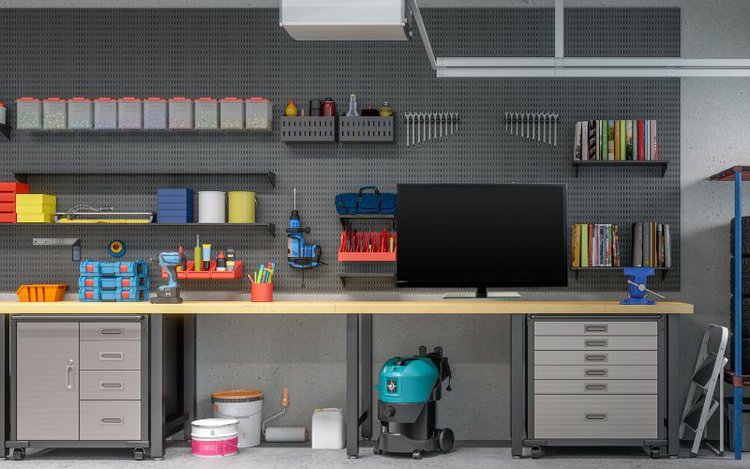
A TV left in a cold garage can get affected by the condensation on its internal components and the thawing afterward.
If the thawing happens too fast, the resulting liquid could short out the electrical components.
Slow thawing is equally harmful if you do not allow the TV 24 hours or more of rest after the condensation. Multiple issues may arise when the TV is turned on in a defrosting state.
Even if the TV manages to break through the condensation barrier, it may not do that all the time. At some point, the TV will grow inefficient and the components will die prematurely.
Therefore, do not turn the TV on immediately after moving it from a cold place to a warmer area.
For instance, if it was cold last night and warm in the morning, do not turn your garage TV on first thing in the morning.
What happens to the display in freezing temperatures?
If it’s an LCD TV, the semi-liquid crystals could freeze, hampering display performance. And the frozen panel may not revert to its original state. It could be permanently damaged.
Leaving TV in a Humid Garage
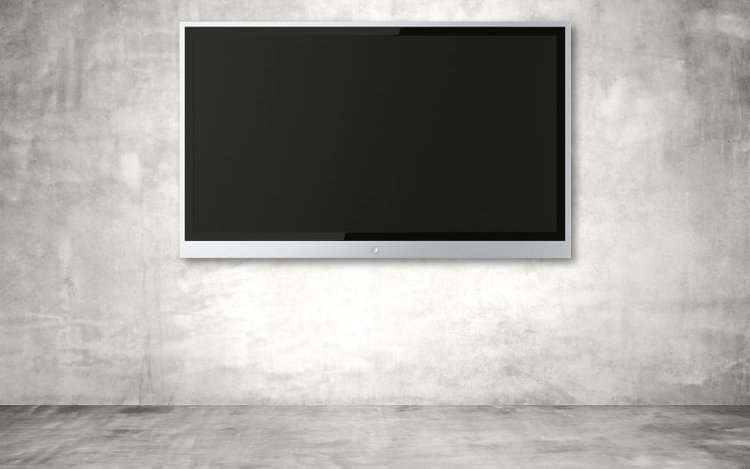
Humidity denotes the water vapor amount in the air. The higher the humidity, the greater the vapor count.
Most LCD and LED TVs function optimally or can be stored in environments with 10 to 70% humidity. But don’t subject your TV to humidity levels closer to the ends of the range.
If you feel it’s too humid in the garage, your TV will likely feel the same.
How does humidity impact your TV?
If you see condensation forming on your TV screen, it indicates high humidity levels.
The increased humidity could temporarily decrease voltage transmittance, resulting in scrambled images.
Like freezing temperatures, humidity could cause condensation in the TV, resulting in shorting or other damages to the electronic parts.
Kindly note that the operating temperature and humidity ranges mentioned above are very broad. The manual may say the TV can work in temperatures above 40° C (104° F), but it doesn’t imply the TV would fancy working in that heat.
Instead, it means the TV can sweat through that kind of heat and not break down. To put your TV at ease, always set the ambient temperature close to the middle of its operating temperature or humidity range.
How Do Plasma TVs Fare Against Heat, Cold, and Humidity?
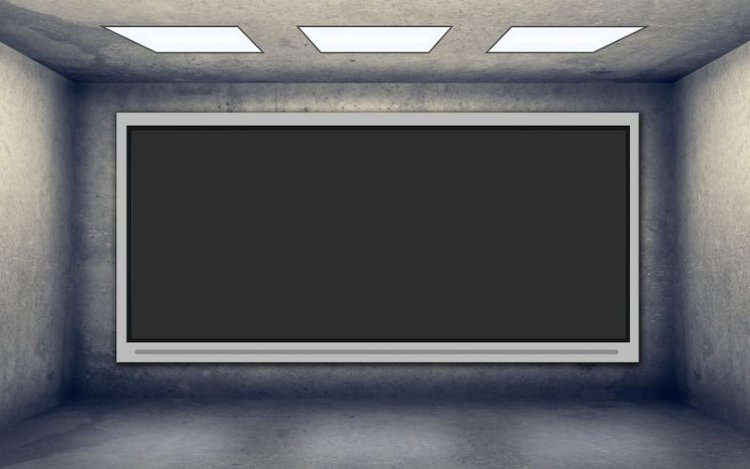
The last set of plasma TVs was made in 2014.
Like LCD and OLED TVs, plasma TVs too were temperature-sensitive.
Panasonic plasma TVs could work in temperatures of 32° F (0° C) to 104° F (40° C). It’s, therefore, safe to assume other plasma TVs could achieve something similar.
Plasma TVs could handle more extreme temperatures when inside their packaging or not plugged in.
Check the product manual to learn more about your TV’s acceptable operating temperature range.
How Do LED TVs Fare in Cold, Hot, and Humid Conditions?
An LED TV is an LCD television that employs LED backlighting. LCD TVs use fluorescent-style backlighting.
Compared to LCDs and Plasma TVs, an LED TV is more energy-efficient but doesn’t respond to cold or hot temperatures very differently. It is not more durable than an LED, LCD, plasma, or OLED TV.
The operating temperature range is pretty similar to other TVs.
What to Expect When Using a TV in a Garage’s Erratic Environment
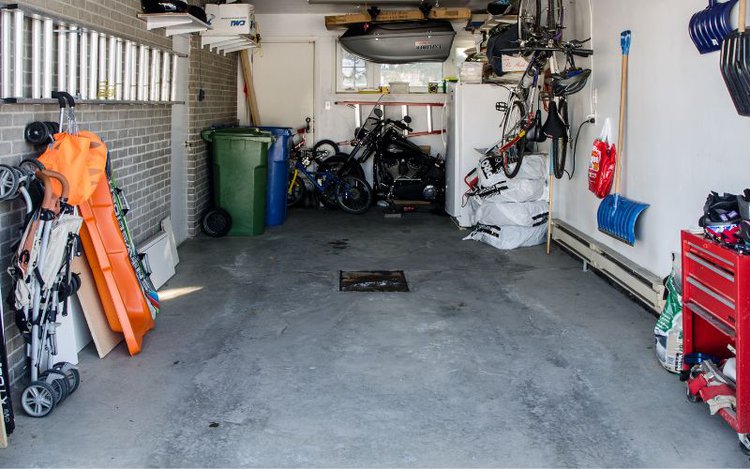
When you turn a TV on when its components are too hot or cold, a host of issues could occur, like the following:
- The television may not turn on.
- The display would look sub-par or may completely freeze. Ghosting or improper frame rates could be a problem.
- Continuing to run the TV may overburden the already stressed-out components, causing them to break.
Kindly note that it’s not just about the unregulated temperatures. The garage’s dirt, grime, and dust could also pose issues to your TV. The dust particles can easily permeate your TV through its cracks and crevices.
If you remember dissembling those boxy TVs of yore, you’d also remember all the dust build-up inside it. And all that was despite the TV being set in a closed environment. Imagine the kind of dust and dirt infiltration with a TV placed in a garage.
FAQs
1. Why would anyone keep their TV in a garage?
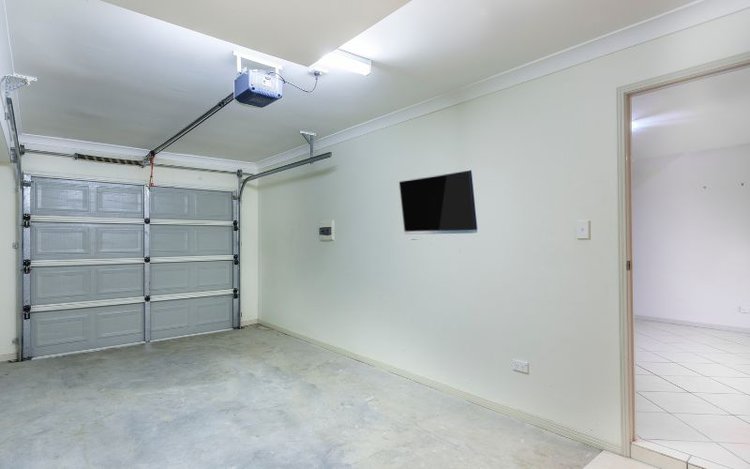
Most TV buyers don’t intend to watch TV from the not-so-comfortable environment of their garage. But, at times, TVs tend to end up in garages awaiting installation or because the owner is yet to make time to uninstall the old television and replace it with the new set.
Sometimes, elders may want to surprise their kids with a new TV for the holidays, birthdays, or special occasions. Until then, the TV stays in the garage, basement, or attic if it was bought or shipped in too early.
The TV should be fine in its storage box and with environmental temperatures ranging between 140° and -4°F and relative humidity in the 20 to 90% range.
Samsung LCD TVs, for instance, can survive temperatures ranging -4° F (-20° C) to 113° F (45° C) when unused. Some TVs can withstand heat up to 125° F (51.7° C).
2. How to safeguard a TV in a garage?
Like humans, animals, and plants, electronics also require shelter from the outside. If you cannot avoid keeping the TV in a garage, use a TV protection cover, like this iBirdie Weatherproof TV Cover or Clicks Depot Premium Waterproof Outdoor TV Cover .
For more robust protection, look at the Storm Shell Outdoor TV Hard Cover with Weatherproof Protection. The cover is airtight, protects the TV from all sides, and comes with a wall-mounting bracket.
- Waterproof, Impact Resistant, and UV resistant. MAX TV dimensions- (LxHxD) 50.4 x 30.10 x 4.25...
- Waterproof, Impact Resistant, and UV resistant
- Front Cover is fully removable for unimpeded viewing and sound from TV
(Paid Link.)
The cover is not meant to encourage people to set up TVs in a garage. Your TV is still more cocooned and comfortable inside the house. The TV cover minimizes the damage the garage environment inflicts on the television, adding a few more months or years to the TV’s lifespan.
Another option is buying an outdoor TV, like this SunBriteTV Outdoor Television. But consider the option only if you want to use a TV in your garage and don’t currently have one to set up there.
- NEXT GEN MODEL AVAILABLE - ASIN B0B11NTSNT- TRUE OUTDOOR TV. SunBrite's Weatherproof 4K HDR...
- UPGRADED ULTRA 4K HDR SCREEN. The latest model in the Veranda Series offers a premium 4K UHD HDR...
- ENGINEERED TO HANDLE ALL WEATHER. Rugged case and components are designed for permanent outdoor...
(Paid Link.)
3. How to make your garage more TV-friendly?
If you are not keen on using protection covers or hard plastic shells and don’t want to buy a TV dedicated to the outdoors, make the ambient environment in your garage more like the rooms inside the house.
In other words, install insulation, heating/cooling units, humidity control tools/mechanisms, etc.
For instance, if the air in the garage feels particularly moist and heavy, use a dehumidifier. Buy one based on the garage size, like this Gocheer Upgraded Dehumidifier for (up to) 650 ft. big garages.
- 【High-Efficiency Dehumidification】: Upgrade to a healthier home with Gocheer's dehumidifier,...
- 【Extra Drain Hose for Continuous Drainage】: Say goodbye to frequent water pouring! Unlike other...
- 【Compact, Portable, and Easy to Use】: Lightweight and portable, effortlessly move this...
(Paid Link.)
Air conditioners can keep the temperature in check and help dehumidify the air.
4. Will placing a TV in a garage void its warranty?
Using an indoor-use TV in a garage may or may not void its warranty. It depends on the manufacturer. For instance, most TV manufacturers won’t entertain warranty on TVs placed near a fireplace because they may construe such usage as harmful to the TV. A few other brands may perceive the same as normal usage.
Conclusion
It’s not just the garage, but the attic, basement, or any other place with extreme or unmanageable temperatures. These settings are not an optimal environment for your TV.
Letting the TV sit in a garage inside its packaging for a few days and later shifting it to its intended spot is fine. After all, TVs get shipped in trucks, boats, and trains without climate-controlled environments whether it’s cold, hot, or raining outside.
But things turn worrisome if the TV is permanently stationed and used in a garage or any place subject to erratic weather conditions. If you need a TV in a garage, make sure it’s not the expensive kind or use them with a proper cover. Better yet, use a proper outdoor TV.
Like burner phones, if you could get your hands on a use-and-dispose TV that you don’t mind if it falls apart after some time, go ahead and set it up in your garage.
Some TVs work fine for years in the garage. Other sets give up the ghost within a few months of use. You cannot say for sure. But because it’s a gamble, do not put your high-end, expensive TV on the line.
Catherine Tramell has been covering technology as a freelance writer for over a decade. She has been writing for Pointer Clicker for over a year, further expanding her expertise as a tech columnist. Catherine likes spending time with her family and friends and her pastimes are reading books and news articles.


